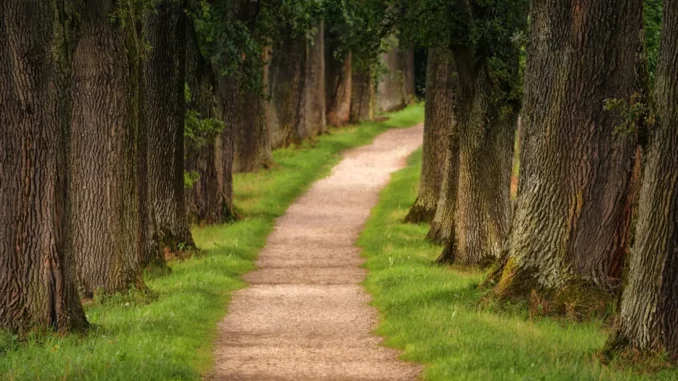
Crafting Your Perfect Garden Path: A Comprehensive Guide
Garden pathways are more than mere walkways; they are a vital component of any landscape, offering structure, accessibility, and aesthetic appeal. These paths not only create designated walking areas but also prevent soil compaction and help define distinct garden spaces. With a touch of creativity and some dedication, you can design pathways that are both visually striking and practical. Here, we explore various DIY garden path options and provide a step-by-step guide to creating them.
Mulch Pathways: Affordable Elegance
Mulch pathways present a cost-effective and straightforward solution for garden paths. Begin by delineating your desired path and excavating some soil to create a base. Lay down landscape fabric to act as a barrier against weeds, then fill the space with mulch. Though mulch paths require periodic replenishment and weed removal, their simplicity and natural beauty make them a popular choice.
Stepping Stones: Adding Rustic Charm
Stepping stones infuse gardens with character and charm. Opt for uniformly spaced rectangular or circular stones for a formal look, or choose natural-shaped flagstones for a more rustic aesthetic. Mark out your path, arrange the stones at consistent intervals, and dig shallow depressions for each. Lay a stable sand base, tamp it down, and set the stones. To enhance the path’s visual appeal, consider planting groundcovers or moss around the stones, which will frame them beautifully over time.
Gravel Pathways: Easy and Versatile
Gravel pathways are another accessible DIY option. To create a durable, weed-free path, follow these steps: outline your path and dig down approximately six inches. Fill the bottom layer with loose stones or pea gravel, tamp it down, and cover with landscaping fabric. Add a layer of sand, tamp and level it, then lay down the gravel. Tamp the gravel with a mallet for stability and fill any gaps with sand.
Flagstone Pathways: Natural Elegance
Flagstones can be used as stepping stones or laid in continuous paths. These naturally cut stones offer a timeless appeal and age gracefully. The preparation process mirrors that of gravel pathways: mark your path, dig down, fill the base with stones or pea gravel, tamp it down, cover with landscaping fabric, add sand, tamp and level it, and finally, lay the flagstones. This method ensures a solid and enduring foundation.
Paving Stones: Polished and Symmetrical
Paving stones, or pavers, are interlocking bricks that form a sleek, stable path. Available in various colours and patterns, they lend a polished and sophisticated look to any garden. For a DIY installation that resists settling and remains level, follow these steps: outline the path, excavate approximately six inches, fill the base with loose stones or pea gravel, tamp it down, cover with landscaping fabric, add a sand layer, tamp and level it, lay the pavers, tamp them with a mallet, and fill the gaps with sand.
Step-by-Step Guide for DIY Gravel, Flagstone, and Paver Pathways
- Mark the Path: Use string to create straight edges.
- Excavate the Base: Dig down approximately six inches with a flat-head spade.
- Create the Foundation: Fill the bottom layer with loose stones or pea gravel, tamp down, and cover with landscaping fabric.
- Add Sand Layer: Fill with sand, tamp down the surface, and level it.
- Place the Stones: Lay down pavers, flagstones, or gravel, tamping them with a mallet to ensure stability.
- Fill the Gaps: Fill between the cracks with sand and sweep away any excess.
Creating a garden pathway is an achievable project for any DIY enthusiast. When working with flagstones and pavers, establish a robust base to prevent future sinking and uneven surfaces. With careful planning and execution, you can craft beautiful and functional garden pathways that enhance your landscape’s visual appeal and practicality. Happy gardening!


Be the first to comment